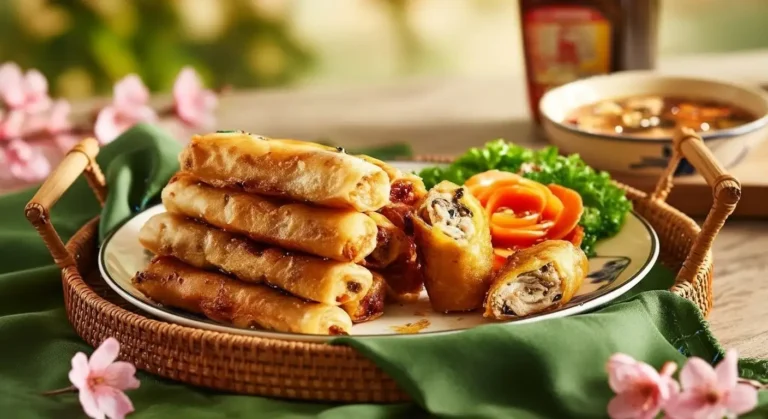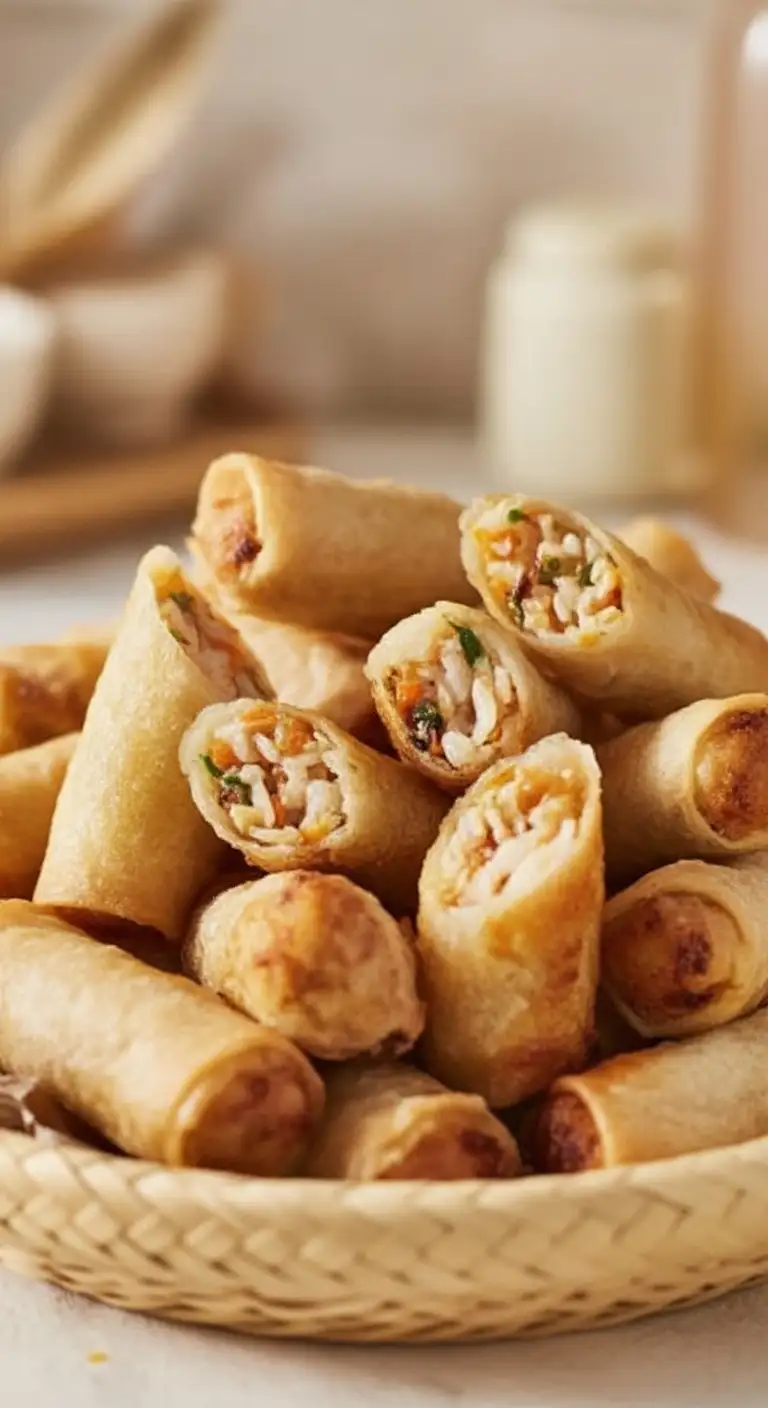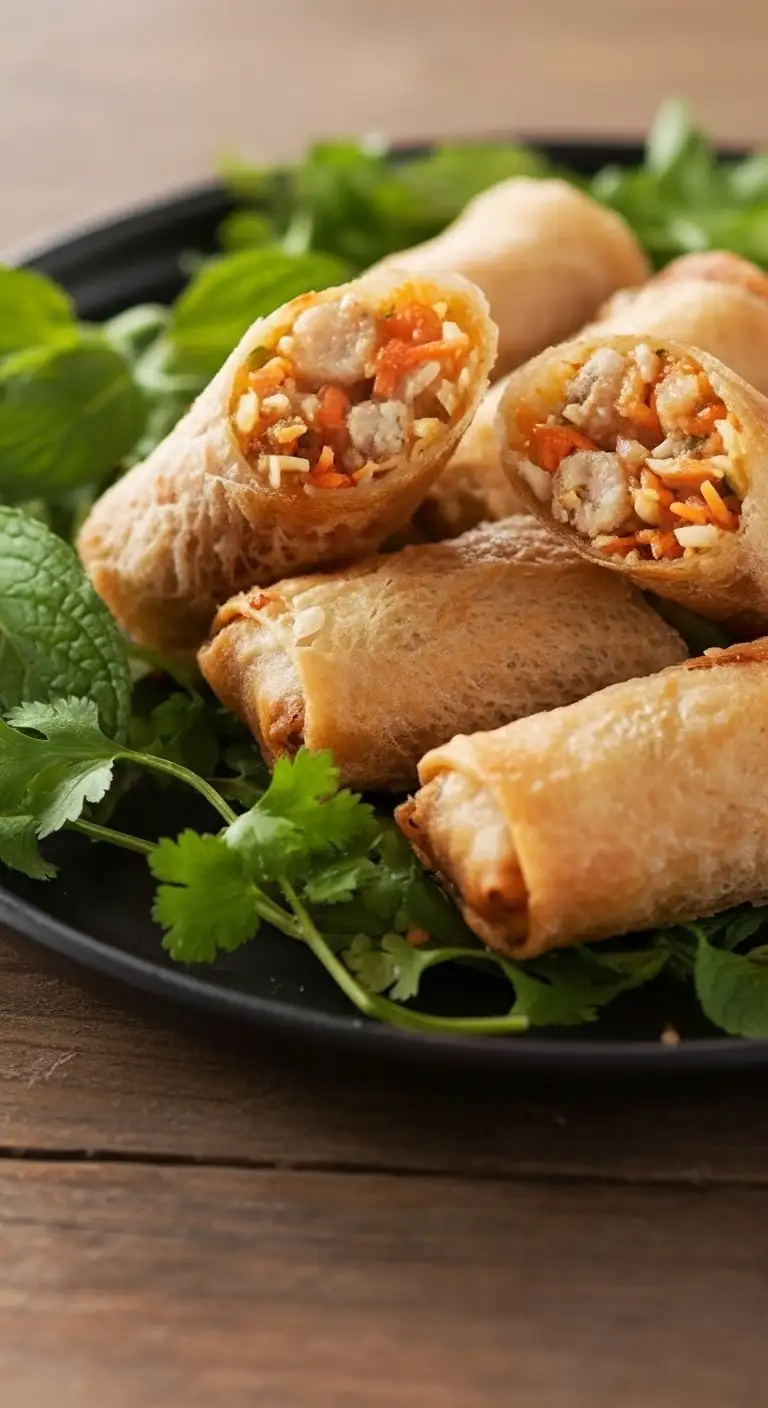The Vietnamese fried spring roll is a universally beloved dish, famous for its shatteringly crisp shell and savory, flavorful filling. The name of this iconic roll, however, is a clear indicator of where you are in Vietnam.
In Southern Vietnam, the roll is known as Chả Giò (pronounced “Cha Yaw”).
In Northern Vietnam, it is called Nem Rán (pronounced “Nem Ran”).
Regardless of the name, this dish is a culinary symbol of celebration, often featured at Lunar New Year (Tết), weddings, and family gatherings.

Chả Giò / Nem Rán: The Basics
The Wrapper: What sets the Vietnamese fried roll apart is the use of rice paper (bánh tráng) as the wrapper. When deep-fried, the rice paper blisters and crisps up, creating a unique, brittle, and bubbly texture that is much lighter than the flour-based wrappers used in Chinese egg rolls.
The Filling: The savory filling is a complex mixture of texture and flavor, typically containing:
Ground Meat: Usually pork, but often a mix of pork and seafood (shrimp and crab).
Mushrooms: Dried wood ear fungus (nấm mèo) for a chewy texture.
Noodles: Glass noodles (miến) for a soft, transparent binder.
Vegetables: Finely shredded vegetables like carrot, onion, and often jicama or taro for sweetness and crunch.
The Double Fry: Many traditional cooks utilize a technique called the “double fry.” The rolls are initially fried at a low temperature to cook the filling and set the wrapper, then briefly fried again at a high temperature just before serving to ensure maximum crispness and a beautiful golden-brown color.
The Soul: The rolls are incomplete without Nước Chấm, the classic Vietnamese dipping sauce, which is a perfect balance of savory fish sauce, sweet sugar, sour lime juice, and spicy chili.
Varieties of Chả Giò / Nem Rán
While the classic ground pork roll is the standard, regional ingredients and dietary needs have led to popular variations:
| Roll Type | Primary Ingredients | Key Feature |
|---|---|---|
| Chả Giò Cua / Tôm | Crab and/or Shrimp | Particularly popular in coastal cities like Hải Phòng (in the North), where fresh crab meat is the main ingredient, giving the roll a richer, sweeter flavor. |
| Chả Giò Rế | Rice Vermicelli Net | Uses a special, fine rice vermicelli noodle web (bánh hỏi) instead of a solid rice paper sheet. This gives the roll a beautiful, delicate, and ultra-crispy mesh texture. |
| Chả Giò Chay | Vegetarian/Vegan | The meat is replaced with a blend of finely diced tofu, taro, mushroom, and root vegetables. Often served near Buddhist temples. |
| Ram Bắp (Central) | Corn (Mung Bean/Pork) | A Central Vietnamese specialty roll where the filling heavily features fresh corn, giving it a sweeter flavor and a distinctive, grainy texture. |

How to Eat Chả Giò / Nem Rán
The Wrapper Method (The Local Way): This is the most traditional and refreshing way to enjoy the roll.
Place a piece of lettuce on your palm.
Add a generous handful of fresh herbs (mint, basil, coriander).
Place a piece of the hot, crunchy roll on top.
Add some pickled carrot and daikon (if available).
Roll everything tightly into a bundle.
Dip the entire wrap into the bowl of Nước Chấm and enjoy in a single, messy, perfect bite.
With Noodles (Bún Chả Giò): The rolls are commonly served atop a bowl of cold rice vermicelli noodles (bún), fresh herbs, and shredded lettuce. The savory Nước Chấm is poured over the entire bowl, turning the dish into a complete, savory noodle salad.
Simply Dipped: The rolls can be eaten on their own, dipped directly into the Nước Chấm or a sweet chili sauce.
Regional Differences: Chả Giò vs. Nem Rán
The difference between the North’s Nem Rán and the South’s Chả Giò is more than just a name—it reflects the distinct culinary philosophies of each region.
| Feature | Northern Vietnam (Nem Rán) | Central Vietnam (Ram) | Southern Vietnam (Chả Giò) |
|---|---|---|---|
| Wrapper | Uses a thicker rice paper wrapper that yields a pale, less bubbly color and a slightly chewier crust. | Can use wheat flour wrappers or the unique rice vermicelli net (Ram Rế). | Uses a thinner rice paper that creates a signature bubbly, golden-brown, and ultra-crisp shell. |
| Filling | Tends to be less varied. Fillings often include kohlrabi and are subtly flavored, focusing on the quality of the meat. Snail fillings are sometimes found. | Small and delicate, often called Ram. Notable for using fresh corn (Ram Bắp) or sometimes shrimp/crab. | Features the widest variety of ingredients, often including taro root and jicama, which give the filling moisture and sweetness. |
| Dipping Sauce | The Nước Chấm is typically lighter and more balanced, less sweet than the Southern version, focusing on the savory and sour notes. | The dipping sauce can be a variant of Mắm Nêm (fermented fish sauce), giving it an intense, salty, and pungent profile. | The Nước Chấm is often sweeter with a more generous hand of sugar, reflecting the Southern preference for sweet flavors in main dishes. |
| Serving | Often served with Bún Chả (grilled pork and noodle dish). | Served as a side or appetizer with rice paper and lots of fresh local herbs. | Commonly used as a topping for Bún Chả Giò (vermicelli noodle salad). |




